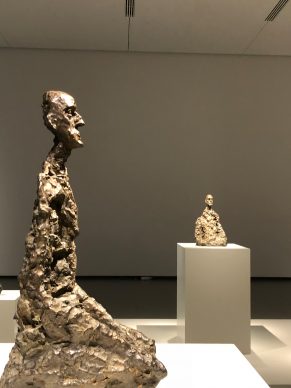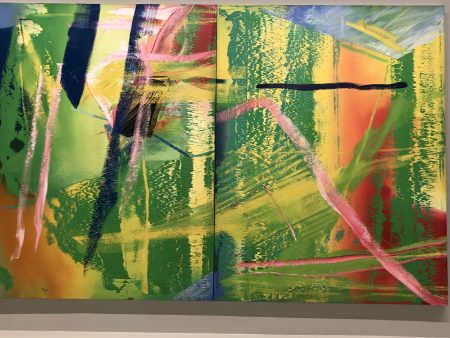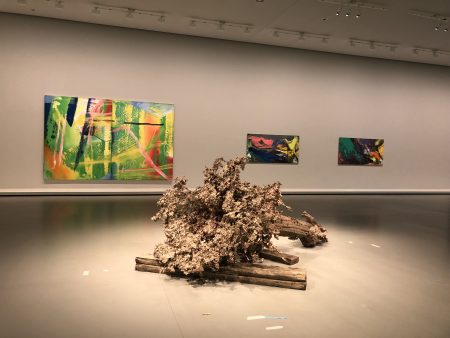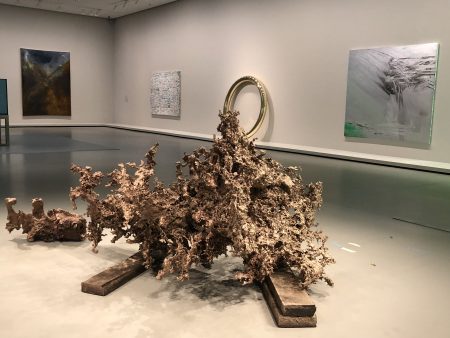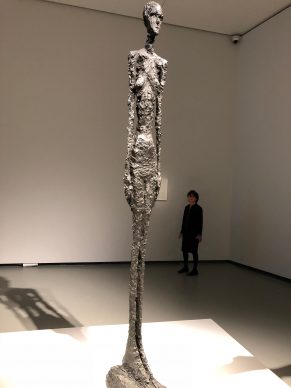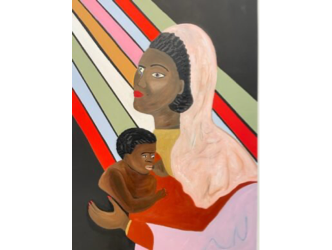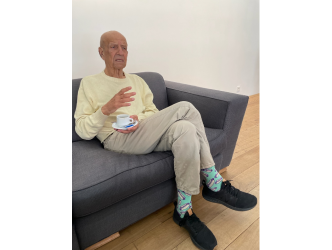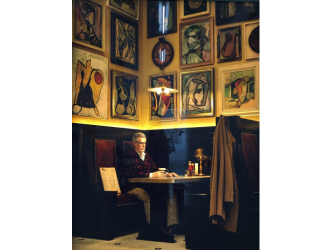Take, for example, in recent years the discovery of the François Pinault collection in Venice, the Miuccia Prada collection in Milan, the Eli Broad collection in Los Angeles, or even the Vuitton Foundation in Paris (at the behest of the French businessman Bernard Arnault).
Remember that all these collections have engendered biases which range from the corporate response to the categorical dislike for contemporary art.
But to distance ourselves a little from this kind of reaction, the primary focus of every notable collection is to reveal a “zeitgeist” as the Germans say, a “spirit of the times”, a vision of the age.
For the new show from the Louis Vuitton Foundation collection, which is displaying 28 artists and takes up the entirety of the building designed by Frank Gehry, the artistic director Suzanne Pagé informs us that: “The large majority of the artworks have never been seen before. They have all been selected for the effect of visual pleasure they produce.”
She explains in a few words:
The spirit of the times apparently goes in very different directions, but with Suzanne Pagé’s talent and experience she has succeeded here in creating a coherent show.
The first big surprise of the exhibition is that an important place is given to an artist who provokes a lot of “I like this” and “I don’t like that”; in short, a name that leaves no one indifferent and has been at the peak of commercial art several years ago, the Japanese artist born in 1962, Takashi Murakami. The foundation is marking his great return with three rooms distinct from the rest of the route: “he is more complex than his derivative products would have you believe” observes Suzanne Pagé.
Murakami has always dreamed of becoming a Hollywood director and his films reveal the aspects of his oeuvre that are, in my opinion, the most interesting and the least filtered by the artist himself.
There is another, more contemplative, part of the route through the gallery. It consists of a deep plunge into the creation itself thanks to immersive art forms, each in its own genre.
This is the case, in painting, of the German superstar Gerhard Richter (born in 1932). This great conceptual artist works with the image and its possible reproductions. But in this instance, it’s his brilliance in the area of abstraction that has interested the Vuitton Foundation.
He has applied paint to the back of a pane of glass 2.10 metres long. This lacquered substance has been left to slide down the full length of the glass panel and another transparent panel has been placed against it to fix it in place. It is literally a dive into colour.
The artist who was his friend during the 1960s and is today deceased, the other great German Sigmar Polke (1941-2010), took an interest in, among other things, the idea of there being secrets or magic which bind things in the universe together.
It’s an idea that could be summed up by the term “alchemy”. In his paintings, which move merrily from figuration to abstraction and vice versa, even within a single canvas, we also find this principle of alchemy. In 1986, for example, he made use of it by mixing a vegetal indigo with an industrial varnish. Out of these components emerged one of the most beautiful artworks ever made by Polke, an abstract piece resembling a landscape, which perfectly embodies the spirit of German Romanticism.
The American artist Matthew Barney (born in 1967) is famous for his series of films which establishes a fantastical parallel universe, Cremaster.
But in 2015 he created a unique kind of work using 858 kilos of molten bronze. Placed in water, the incandescent metal morphed into extraordinary vegetal forms. A new kind of tree measuring 3 metres in length.
When it comes to contemporary creation, the French artist Pierre Huyghe (born in 1962) has played with the notion of immersion within the artwork to perfection. The artist created a giant aquarium in 2014. Inside it we find an enormous rock dating back to the Cambrian geological period, the era that saw the appearance of animals on earth. Around the volcanic rock roam little primitive forms of marine life: horseshoe crabs. They are said to be 450 million years old.
In the same year, Huyghe also conceived an utterly hypnotic film whose hero is a monkey wearing a long-haired wig and dressed as a little girl. She hobbles into what could be a bar. A creature halfway between grace and monstrosity. A little girl with long nails and hairy arms, which could have been inspired by some real events in Fukushima. We will never know the truth. The artist seeks to leave the viewer mired in uncertainty.
If we’re talking about the spirit of the times, we cannot overlook the painting of Mark Bradford (born in 1961). The artist who represented the United States at the most recent Venice Biennale has become the idol of the art market with his paintings made from a great fusion of materials and colours.
If we’re talking about the spirit of the times we also cannot overlook the giant inflatable cat by Mark Leckey (born in 1964) which we saw recently in the Syz collection in Geneva, placed here in the Olafur Eliasson installation, which has above all else the merit of being very large.
If we’re talking about the spirit of the times we will highlight the presence of Adrian Villar Rojas, a multifaceted and talented artist who is ubiquitous on the international art scene and who recovers and makes marble copies of the legs of Michelangelo’s David, around which he places two nylon cats embracing. Two vestiges of a totally disparate culture.
But if we’re no longer talking about the spirit of the times, we will take pleasure in seeing an exceptional room featuring a group of sculptures by Alberto Giacometti (only one of which has been recently acquired) placed opposite a large photo by one of the members of the Arte Povera movement, Giovanni Anselmo (born in 1934). A solitary man walks through the field of the photo as the camera takes a picture of him from above.
Suzanne Pagé manages, however, to establish a dialogue between a huge paper cut-out of a dancer by Matisse and the spectral creatures of Giacometti, an anthropometry painting with the imprints of women’s bodies in blue by Yves Klein and the mysterious figure in bronze making a gesture of blessing by Kiki Smith.
To conclude on the notion of the spirit of the times in 2018, inspired by the Vuitton Foundation’s acquisitions, we could say that it loosely corresponds to a plunge into matter, Romantic German painting, hairy little girls or, in summary, to the eternal solitude of mankind. A theme we all know well.
Until 27 August. www.fondationlouisvuitton.fr.
Support independent news on art.
Your contribution : Make a monthly commitment to support JB Reports or a one off contribution as and when you feel like it. Choose the option that suits you best.
Need to cancel a recurring donation? Please go here.
The donation is considered to be a subscription for a fee set by the donor and for a duration also set by the donor.

